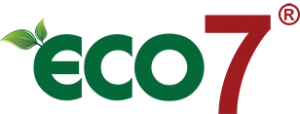
Orient 227® is the brand name for Heptafluoropropane (HFC-227ea) manufactured by Orient Corporation. HFC-227ea is the leading clean agent replacement for Halon 1301 in the special hazards suppression industries worldwide. It is traded under various brands. However, the National Fire Protection Association (NFPA) 2001 Clean Agent, makes reference only to the generic name of the chemical, which is HFC-227ea. Orient provides the highest quality assurance of its HFC-227ea and is supported by a team of highly trained and qualified chemical engineers and scientists. Orient 227® has achieved a minimum purity of 99.95% and less than 10 ppm of moisture. It has less than 1 ppm acidity of hydrofluoric acid (HF). The non-volatile residue is less than 0.05g/100mL.
Orient 227®received its component recognition from Underwriters Laboratories (UL) and its component approval from Factory Mutual(FM). Both UL and FM are the independent third-party organizations that certify the purity specifications as required by NFPA2001 to be an effective fire suppression agent. FM Approvals conducts a fire test on Orient 227® based on the standards and requirements under FM5600. UL Listings is based on UL2166 Standard for Halocarbon Clean Agent Extinguishing System Units, edition revision date 03/22/2001. All testing was performed in accordance with NFPA2001 (2008 Edition).

Orient 125 is a trademark of Orient’s HFC-125. Pentafluoroethane, Orient 125 is an effective fire extinguishing agent which is safe, clean, electrically non-conductive and is suited for use at low temperatures because it has a low boiling point (-48.5°C (-55.3°F)) which is similar to that of Halon 1301 (-57.7°C (-72.2°F)).
Orient 125 can be used in applications where people are normally present (normally occupied spaces) for Class A fire assets. Class A assets represent more than 90% of all commercial protection scenarios. It has Zero Ozone-Depleting Potential, Low Global Warming Potential of 3,500 and a short atmospheric lifetime. These characteristics make it suitable not only for new installations using Orient’s total flooding systems but also as a Halon 1301 replacement application.

Orient FK-5-1-12 is a trademark of Orient’s FK-5-1-12, Dodecafluoro-2-methylpentan-3-one. FK-5-1-12 is another widely used
extinguishing clean agent. It is environmentally safe and best used in fire hazard areas containing A, B, & C classes of fire. It has been approved by US EPA and ISO for its safe characteristic and fire extinguishing effectiveness. Orient FK-5-1-12 is an acceptable alternative clean agent for Halon 1301 replacement.
Orient 5112 received its component recognition from Underwriters Laboratories (UL). UL is an independent third-party organization that certifies the purity specifications as required by NFPA2001 to be an effective fire suppression agent. UL Listings is based on UL2166 Standard for Halocarbon Clean Agent Extinguishing System Units, edition revision date 05/29/2015. All testing was performed in accordance to NFPA2001 (2015 Edition).

Orient’s latest venture in an eco-friendly extinguishing product is a trademark as Eco7®. The Liquid Fire Extinguishing Clean Agent, Eco7®, is made based on a natural ingredient that has the ability to convert organic fertilizer when it meets soils and germs; hence, Eco7® is highly recommended for use in combating forest fires as it will support plants to grow. Additionally, Eco7® has the capabilities to suppress different classes of fires including Class A, B and K (kitchen fires). It is non-toxic, non-corrosive and safe to use in the emergency situation to escape fires scenes (note: Eco7® can be sprayed to soak on clothing to act as fire blanket).

Orient Inert Gas Fire Extinguishing System consists of high pressure cylinders filled with either IG-55, IG-100 or IG-541 agent under pressure, connected to fixed piping and nozzles or hoses which is designed in accordance with the National Fire Protection Association (NFPA) 2001: Standard on Clean Agent Fire Extinguishing System and EN 15004: Fire Fighting System.
Seamless steel cylinders manufactured in accordance with the following specifications.
Pressurized equipment directive 97/23/CE (CE Marking)
Transportable pressurized equipment directive (TPED) 199/36/CE (π Marking)
Cylinders used for the inert gas system have the design pressure of 2,900 psi (200 bar) and 4,351 psi (300 bar) with the test pressure of 6,526 psi (450 bar). Each cylinder is equipped with valve containing a safety burst disc for protection against over pressurization due to elevated temperature.

Carbon dioxide is an effective fire suppression agent applicable to a wide range of fire hazards. Carbon dioxide works quickly, with no residual clean-up associated with a system discharge which translates into a minimal business interruption.

